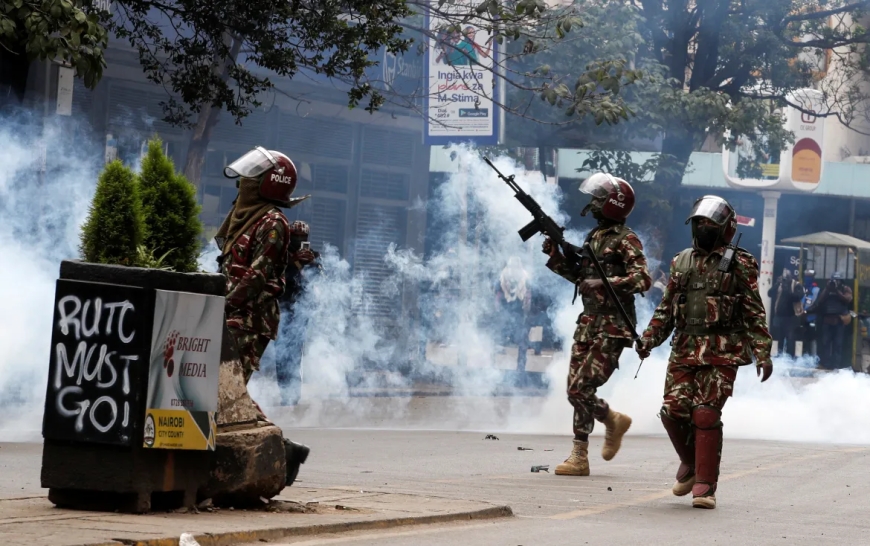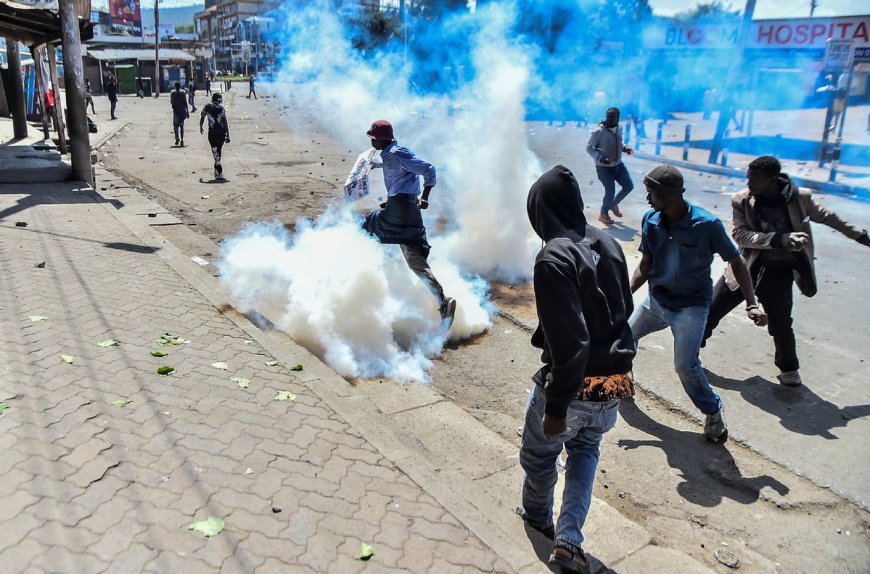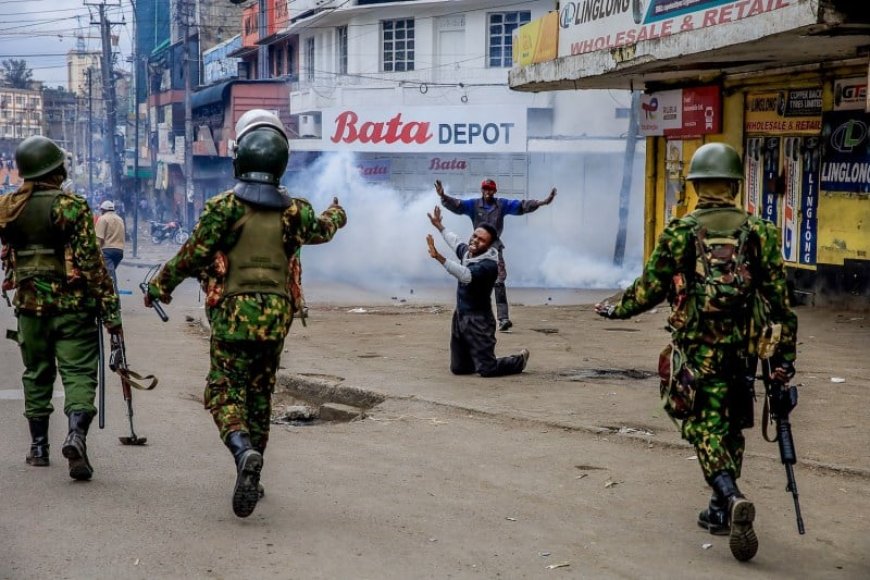Police Barred From Using Teargas At These Areas During Protests
This decision follows a petition filed by the Kenya Human Rights Commission (KHRC), which requested urgent intervention to safeguard the constitutional rights to life, health, and peaceful assembly.

The High Court has effectively curtailed police efforts to manage crowds by issuing conservatory orders prohibiting the use of tear gas, water cannons, or other crowd-control tactics against peaceful protesters seeking medical assistance in designated safe spaces.
In a ruling delivered on Friday, June 27, Justice Bahati Mwamuye restrained the police from targeting hospitals, ambulances, emergency medical facilities, and places of worship where demonstrators may seek treatment during protests.
This decision follows a petition filed by the Kenya Human Rights Commission (KHRC), which requested urgent intervention to safeguard the constitutional rights to life, health, and peaceful assembly.

Protesters react to a tear gas canister thrown by riot police to disperse them during demonstrations in Nakuru, Kenya on June 25, 2025. /AGENCIES
"Pending the inter partes hearing and determination of the Petitioner/Applicant's Notice of Motion Application dated 26/06/2025, a conservatory order be and is hereby issued restraining the 1st Respondent and all Officers and personnel of the National Police Service ... from deploying teargas or similar chemicals, water cannon, or other crowd-control measures against unarmed and peaceful persons assembling, demonstrating, picketing, and/or petitioning public authorities, who have thereafter entered into or taken shelter in vehicles, closed or semi-closed spaces, or areas with limited ventilation or limited avenues of safe and orderly exit," read the order in part.
The ruling further prohibits police from deploying tear gas or similar chemical agents in confined or poorly ventilated areas, such as buildings or vehicles, where protesters may be seeking refuge.
Additionally, it safeguards medical personnel and patients from being targeted during demonstrations, addressing concerns that had been previously raised.
"A conservatory order be and is hereby issued restraining the 1st Respondent and all Officers against similar actions on demonstrators WHO HAVE THEREAFTER entered into or taken shelter in vehicles, closed or semi-closed spaces, or areas with limited ventilation or limited avenues of safe and orderly exit," the ruling continued.
In its petition, the Kenya Human Rights Commission (KHRC) alleged that during the Wednesday protests, police deliberately targeted designated safe spaces to inflict greater harm on both injured protesters and medical personnel.
KHRC stated that at approximately 2 p.m. on Wednesday, June 25, police officers stormed a medical response centre set up at Jamia Mosque in Nairobi and fired tear gas canisters, injuring both patients and healthcare workers.
The commission noted that this was not an isolated incident, pointing to similar actions during the June 25, 2024, demonstrations, where officers allegedly launched tear gas into hospitals and churches, including Nairobi’s All Saints Cathedral, where injured protesters had sought refuge.
The petition further claimed that police went as far as blocking roads leading to Kenyatta National Hospital—where many of the wounded were being transported—indicating what KHRC described as a deliberate attempt to escalate harm.
KHRC welcomed the court’s decision, calling it a necessary step to ensure the protection of protesters during critical moments.
Meanwhile, Justice Mwamuye ordered the petitioners to promptly serve the National Police Service (NPS) and the State Law Office with the application, petition, and the court's directive.
The NPS was further instructed to submit its response to the case by July 11.







